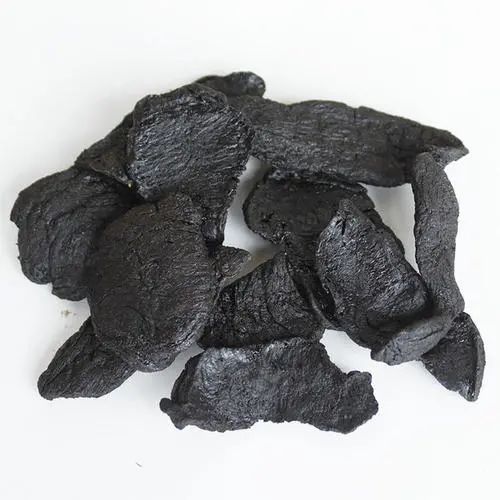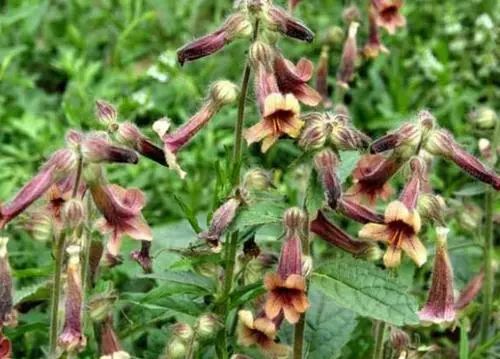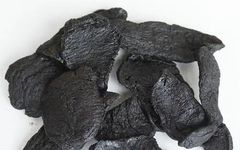————————————————————————————————————————————————————————————————–
 Name: Shu Di Huang
Name: Shu Di Huang
Taste and Properties: Sweet in flavor, slightly warm in nature; enters the Liver and Kidney meridians.
Primary herb for nourishing Yin and a key herb for blood replenishment.
It is often said that when nourishing the kidneys, one must not forget Shu Di Huang, as the famous Ming dynasty physician Zhang Jingyue stated: “It greatly replenishes blood, nourishes Kidney fire, fills the bone marrow, and benefits true essence, specifically replenishing the original Qi of the kidneys.” The “Benjing Fengyuan” also records, “Shu Di Huang, processed with fire to steam and dry, has a bitter taste that transforms into sweetness, representing the Yang within Yin, thus it can replenish the original Qi of the kidneys.” Shu Di Huang has been widely used to treat deficiency of Liver and Kidney Yin blood, and is known as the “master of nourishing water and the king of blood replenishment.”
Shu Di Huang Profile
Shu Di Huang is processed from Sheng Di Huang (Raw Rehmannia), which is primarily produced in Henan, Hebei, Inner Mongolia, and Shanxi. It belongs to the Scrophulariaceae family, and the medicinal part is the tuberous root of Rehmannia. The medicinal forms of Rehmannia include Sheng Di Huang, Shu Di Huang, and Sheng Di Huang Charcoal. Shu Di Huang is made by mixing dried Sheng Di Huang with yellow wine, steaming it until it becomes black and moist inside and out, then drying it to about 80% dryness and cutting it into thick slices. When Shu Di Huang is directly stir-fried into charcoal or calcined in a closed container, it is referred to as Shu Di Tan (Shu Di Charcoal).
Functions and Indications:
Functions: Shu Di Huang nourishes blood, nourishes Yin, benefits essence, and fills the marrow; Shu Di Tan stops bleeding.
Indications: 1. Used for blood deficiency leading to yellow or pale complexion, dizziness, palpitations, and insomnia. 2. Used for Kidney Yin deficiency leading to thirst (diabetes) and night sweats. 3. Used for deficiency of Liver and Kidney essence and blood leading to dizziness, tinnitus, premature graying of hair, and weakness in the lower back and knees. 4. Used for women with Yin blood deficiency leading to irregular menstruation or infertility. 5. Used for Kidney deficiency causing cough and asthma. Also
Also
Identification and Selection
The main difference between Sheng Di Huang and Shu Di Huang lies in their functions: they are different. Sheng Di Huang is processed and has a sweet and bitter taste, is cold in nature, and has a small nourishing property. Its main function is to clear heat, cool the blood, nourish Yin, and generate fluids, often used for heat-related bleeding or conditions like high fever, dry mouth, and purple tongue. Therefore, Sheng Di Huang is a key herb for nourishing Yin and cooling the blood. Shu Di Huang, after processing, has a sweet taste and is slightly warm in nature, capable of nourishing blood and nourishing Yin. It can be used for all conditions of deficiency in essence, blood, and Yin fluids that are slightly cold or mild heat, making it a key herb for blood replenishment. Although Sheng Di Huang and Shu Di Huang come from the same plant, their functions are different; thus, differentiation and treatment must be applied, and they should not be confused.
Precautions:
1. This product is nourishing and may easily cause digestive discomfort; it is advisable to use it with Chen Pi (Aged Tangerine Peel), Sha Ren (Amomum Fruit), etc., to promote digestion. 2. Those with Qi stagnation, phlegm accumulation, abdominal distension, and loose stools should avoid using it.
Medicinal Cuisine
1. Nourishing the kidneys and replenishing blood
Shu Di Huang and Angelica Lamb Soup: 700 grams of lamb, 30 grams of Shu Di Huang, 15 grams of Angelica Sinensis, 30 grams of Astragalus, and appropriate ginger. Simmer on low heat for 3 hours, then add appropriate sugar, salt, jujubes, chicken essence, etc., and simmer for another 15 minutes. This medicinal dish aims to nourish blood to achieve the goal of nourishing Yin, making it an excellent dish for spring supplementation, capable of nourishing the kidneys and promoting Yang.
2. Nourishing the lungs, nourishing the kidneys, moistening dryness, and stopping cough
Cordyceps and Shu Di Huang Old Duck Soup: 10 grams of Cordyceps, 40 grams of Shu Di Huang, 6 pitted jujubes, and 1 old duck. Place the Cordyceps, Shu Di Huang, and jujubes into the duck’s abdomen, add an appropriate amount of boiling water, and simmer in a water bath for 3 hours. After seasoning, drink the soup and eat the meat. This soup has the effects of nourishing the kidneys, replenishing the lungs, moistening dryness, and stopping cough, suitable for dry cough, dry throat, and thirst caused by Lung and Kidney Yin deficiency.
3. Nourishing the kidneys with purple fruit
Shu Di Huang Wine: 30 grams of Shu Di Huang and 500 grams of white wine, soak Shu Di Huang in the wine. Suitable for Kidney deficiency with soreness and weakness in the lower back and legs.
4. Nourishing Yin and replenishing the kidneys
Shu Di Huang and Pig Trotters: 50 grams of Shu Di Huang, 30 grams of Goji Berries, 30 grams of Eucommia Bark, 30 grams of Huai Niu Xi, and 1 pig trotter, all stewed together. Suitable for weakness and soreness in the lower back and knees, dizziness, tinnitus, and hearing loss caused by Liver and Kidney deficiency.
Ancient and Modern Recipes
1. Nourishing blood and harmonizing blood
12 grams of Shu Di Huang, 9 grams of Dang Gui (Angelica Sinensis), 9 grams of Bai Shao (White Peony), and 6 grams of Chuan Xiong (Szechuan Lovage), decoct in water. Suitable for dizziness, palpitations, insomnia, and women’s irregular menstruation or amenorrhea caused by blood deficiency.
2. Benefiting Qi and nourishing blood
9 grams each of Shu Di Huang, Ren Shen (Ginseng), Bai Zhu (White Atractylodes), Dang Gui, Bai Shao, Chuan Xiong, and Bai Fu Ling (White Poria), 5 grams of Gan Cao (Licorice), 3 slices of ginger, and 5 jujubes, decoct in water.
3. Nourishing the kidneys, protecting the lungs, stopping cough, and resolving phlegm
9 grams each of Shu Di Huang, Sheng Di Huang, Dang Gui, and Mai Dong (Ophiopogon), 12 grams of Bai He (Lily), 6 grams each of Bai Shao, Jie Geng (Platycodon), and Bei Mu (Fritillaria), 3 grams each of Xuan Shen (Scrophularia) and Gan Cao, decoct in water. Suitable for cough and asthma caused by Lung and Kidney Yin deficiency, with blood in the phlegm, dry throat, and dizziness.
Blood-nourishing herbs primarily function to generate blood and treat blood deficiency conditions, including Dang Gui, Shu Di Huang, Bai Shao, He Shou Wu, E Jiao, and Longan flesh. Blood deficiency is closely related to the heart, liver, and spleen. Patients with blood deficiency in TCM diagnosis may present with the following clinical manifestations: dull yellow complexion, pale lips and nails, dizziness, palpitations, insomnia, tinnitus, forgetfulness, and women’s irregular menstruation or amenorrhea. TCM blood-nourishing herbs are not equivalent to Western medicine’s blood supplements; some mistakenly believe that TCM blood-nourishing herbs can treat all types of anemia, which is incorrect. In clinical practice, TCM must differentiate and treat based on the patient’s symptoms, combining blood-nourishing herbs with herbs that invigorate blood, tonify Qi, nourish Yin, or regulate Qi, so patients with anemia should not use blood-nourishing herbs indiscriminately. Additionally, blood-nourishing herbs are often rich and may hinder digestion, so those with abdominal distension, poor appetite, or diarrhea should use them cautiously, possibly combining them with digestive herbs to aid digestion, and consult a physician if necessary.
Recommendation: For more folk TCM health information, long-press your finger to scan the QR code below to learn more↓↓↓↓↓


The knowledge left by our ancestors is often simple yet practical!
If you find it useful, save it and share it with your friends; it can truly help everyone!
Disclaimer: This article is reproduced from the internet and published materials. If there is any infringement, please contact us for removal. The various prescriptions and recipes mentioned are for informational sharing only and do not constitute medical advice, recommendations, or guidance. Please use them under the guidance of a physician if needed.

